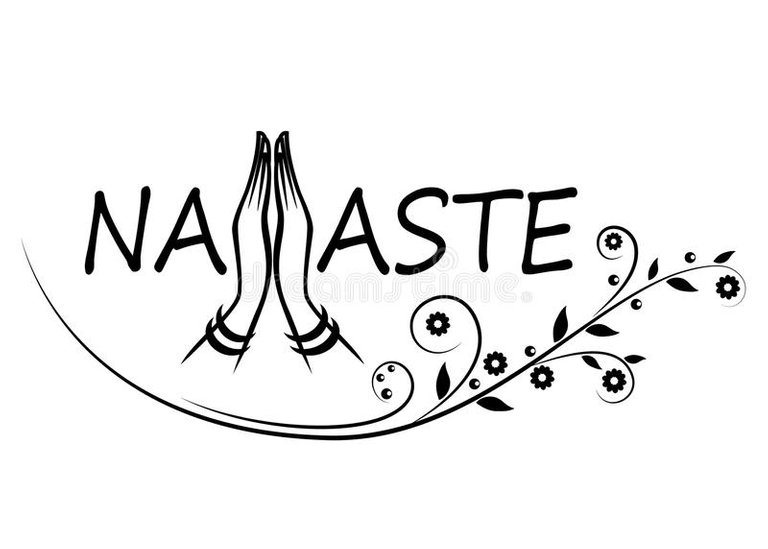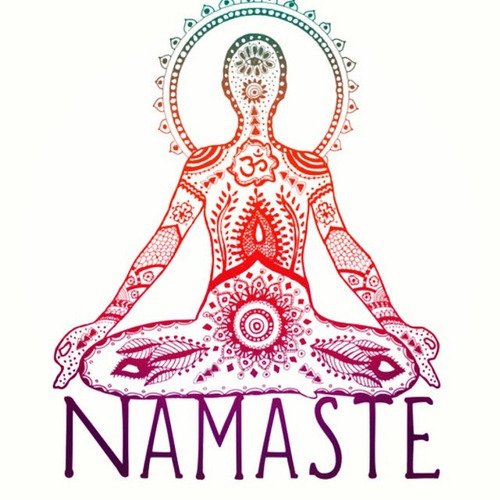Hello friends of steemit, in the next post I will talk about a term that is very used in oriental culture and in some countries of the world, many people ask the meaning of the word "Namaste" and then often, people who practice yoga usually , meditation or Mindfulness surely already know the meaning of this word.
"Namaste" is a term derived from the sahranistic language (the classical language of India) and, nowadays, in many of the dialects of the Hindu is used to greet or say goodbye to someone. Buddhist philosophy has burst into the West, which is why this article has received so many visits.
What does "Namaste" mean, so used in meditation? Today we delve into Buddhist philosophy.

If you have the privilege of being a person in the world of relaxation and practice some disciplines such as yoga, you may have noticed that instructors often use an intriguing word: Namaste.
In the same way, it is also very common that you have heard the same term on certain occasions in certain environments of deepening in the spiritual and in certain cultures of Asia. But what is the meaning of this word?
What does the word 'Namaste' mean?
Namaste (you can also find it written as 'Námaste', with tilde in the 'a') is a term that comes from the Sanskrit language (the classical language of India), and its meaning is unknown by most people precisely that's why : the Namaste term originates in lands far removed from any Spanish-speaking region. So, in today's text we will be in charge of discovering the history and applications of this beautiful word.
The origin of Namaste
The etymological roots of the word Namaste are found in the atavistic Hindu culture. Sanskrit is one of the many languages spoken in Indian and Nepalese geography, which is considered a sacred language for practitioners of Hinduism.
The term Namaste, then, is used as a traditional form of greeting, both in a meeting time and in the farewells, and usually makes the gesture of joining the palms of the hands in front of the chest when pronounced (gesture is called mudra). It is also used to give thanks or to ask for something, and always as an unequivocal sign of respect towards the interlocutor.
The meaning of Namaste
The etymology of the word Namaste reveals that there are two roots that make up the term. The first of these, namas, is a neutral noun meaning something like 'greeting', 'reverence' or 'courtesy', and it is a particle derived from the root nam, whose meaning is: 'bow down' or 'reverence'.
The second root of Namaste is constituted by the pronoun te, which is the second person of the singular of the indirect object: "a ti". For this reason, an exact translation, etymologically speaking, of Namaste could be: "I greet you", or "I bow to you".
Currently, the Hindi language and many of its dialects use the term as usual, being one of the many ways to say hello or say goodbye to someone.
Spirituality, yoga and Namaste
Since Namaste's meaning is so concrete, why is it used so often in the oriental disciplines of relalation and meditation?
The spiritual and philosophical meaning of Sanskrit gives Namaste a look that escapes his purely semantic definition. Buddhism incorporates this word into its spiritual tradition.
According to experts, the particle 'namas' can acquire the meaning of "nothing of me", proving that the self of the enunciator of the term is reduced to nothing, this being a sign of the attitude of absolute humility towards the interlocutor . When the Namaste greeting is made from the authenticity of the soul, they tell, a genuine bond between the two people is created, beyond interests, expectations and social roles.
Divine essence: Buddhism and purification of the soul
Another interesting feature of the spiritual significance of this word lies in the belief that there is a divine essence in each person. Therefore, according to the religious traditions in which this term is rooted, by saying the word Namaste while accompanied by the mudra (hands joined in prayer position and a slight bowing of the trunk forward, whose cultural meaning comes from religions Orientals), we are witnessing the presence of the essence of God in oneself and in the other person. Divine essences are recognized and greeted.
Although in Namaste yoga sessions Namaste is often used as a farewell, at the end of the class, the truth is that it is more a greeting than a way of saying goodbye. In fact, the professionals of the oriental disciplines of self-knowledge recommend that Namaste be used in the introduction and the first exercises of each session, as a mantra (although there is no reason based on the scientific method by which the word Namaste must be used in one context and not in another). This expression is often used in the Western world as a way of expressing good wishes towards the other.
However, yoga teachers prefer to use the mantra at the end of the class, since that is the moment when the environment and the psyche of each of the students are in a more prone situation to benefit from Namaste.
The secular use of this term
Of course, it is not necessary to believe in the Buddhist faith to make use of this term. However, we must bear in mind that since the practice of many forms of meditation usually occurs in environments associated with Buddhism, it can be an element that contributes to the setting of the sessions and to increase their power of suggestion.
It should not be forgotten that in tasks related to the regulation of the attentional focus the aspects associated with suggestion are very important, for which it is worth taking advantage of its potential to achieve the desired effect and facilitate the work of those who participate in these experiences.

References :
- https://www.mindbodygreen.com/0-29229/what-does-namaste-actually-mean.html
- http://www.smh.com.au/lifestyle/news-and-views/social/why-white-people-need-to-stop-saying-namaste-20160401-gnw2xx.html
- http://www.dailymail.co.uk/femail/article-5304301/Mumsnet-user-mistakenly-receives-mean-text-herself.html
- http://www.dailymail.co.uk/news/article-5315697/Britains-economy-grew-0-5-final-quarter-2017.html
- Nikola Tesla